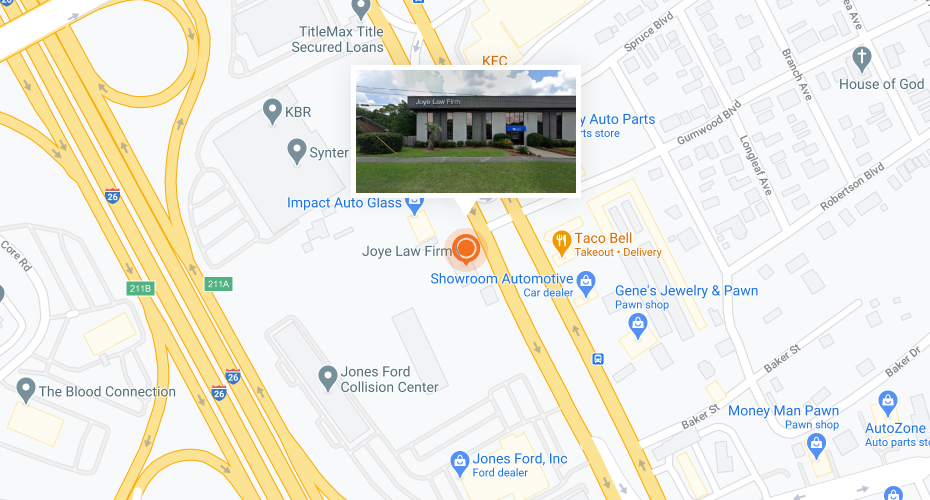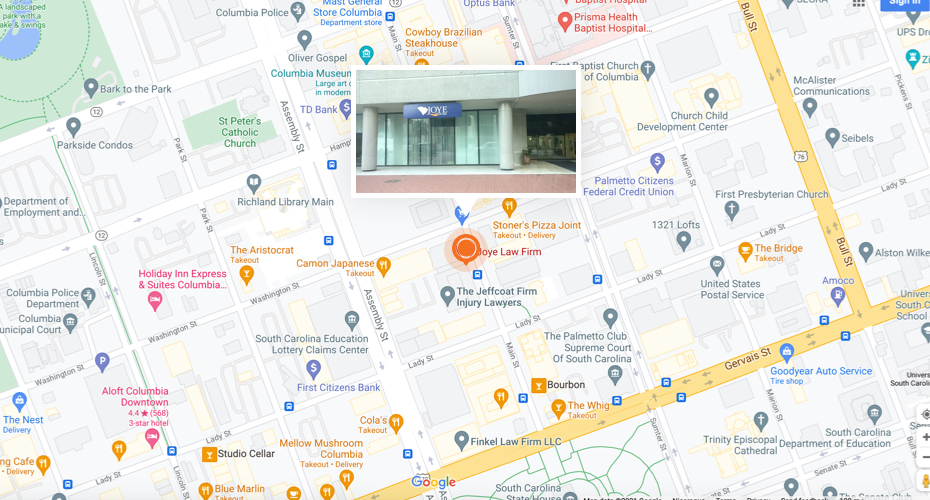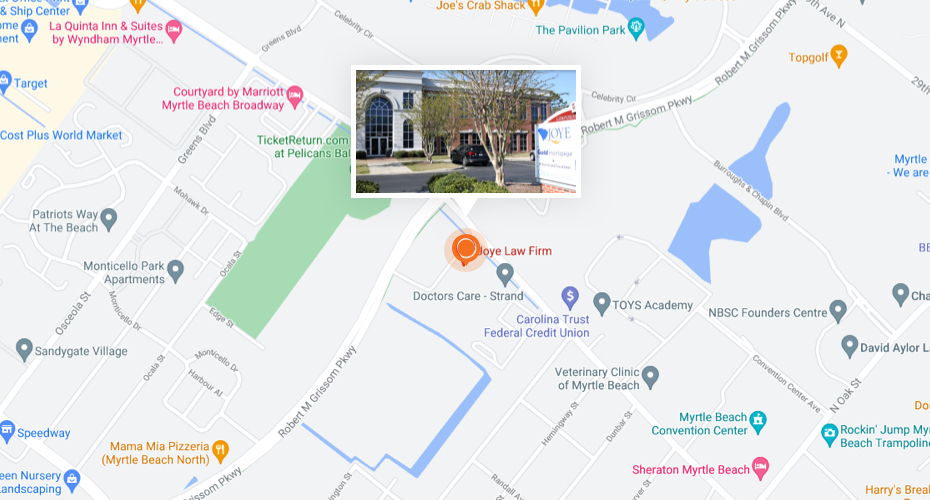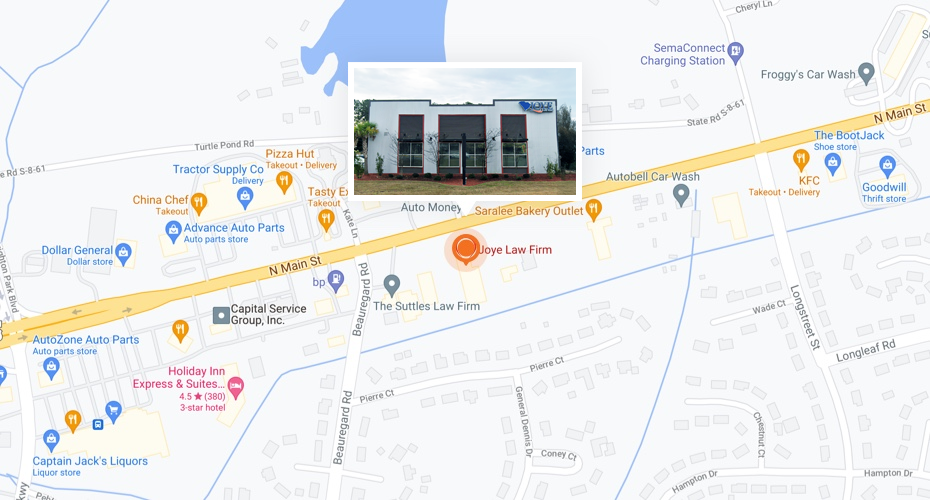
Six-year-old Sergio Jimenez was riding in the backseat of his parent’s 1985 Dodge minivan when his mother turned left to exit a shopping center. An oncoming Honda Civic came through the intersection traveling at just 5 mph and hit the minivan behind the left rear wheel.
The impact was so minor that there was no damage to the Civic. It was surprising to learn that this low-speed collision caused the minivan to roll over and the rear hatch to open. Sergio, who just moments before the accident unfastened his seatbelt to reach for a pack of gum, was thrown through the open door and died of a fractured skull when his head hit the pavement.
Desperate for answers, the family hired Mark Joye of the Joye Law Firm.
Uncovering a Landmark Product Liability Case
“Initially, it looked like any other auto accident case except that it had especially unfortunate circumstances,” said Joye. “I knew there was something odd when I realized that all the other doors stayed closed except for the rear lift hatch,” explained Joye. But it took a while to work up the case and realize why the latch was opening. I certainly didn’t see it as a landmark product liability case.”
While watching the television show, “Inside Edition”, Joye discovered that another lawyer in Miami was working on a similar case. He met with the lawyer who put Joye in touch with a national network of lawyers who were working on these types of cases. Joye then studied and learned the design flaws and history that caused the rear lift hatch on Chrysler minivans to open in left-side crashes.
Federal regulations require that the latch post on all passenger doors have a metal cap on top to prevent the latch from slipping off the post if the door is bent during a collision, but the regulations did not apply to the rear hatch door on minivans. In spite of warnings from some of its engineers, Chrysler chose to use an uncapped post on its minivans without performing any crash tests to find out if it was safe in doors.
“Once I started contacting other lawyers around the county and learning that our case was not some isolated incident, that’s when I realized we had a serious products liability case,” said Joye.
Joye knew he needed help with both financing and staffing to effectively represent the case. As a result, he teamed with a 70-lawyer firm in Washington, D.C.
“Back then [1994], this was by far the biggest case I’d ever handled,” said Joye. “A small, six-man firm certainly can’t take on a giant corporation like Chrysler without help. We needed a large firm to help finance the case, and they had a large enough support staff to wade through the thousands of documents Chrysler was dumping on us.”
Together, they sued Chrysler for negligent design, strict liability, and negligently misrepresenting in its advertising that the minivan was safe. They claimed that Chrysler knew the rear latch was defective at the time it was designed.
For the Jimenez family, the loss of their youngest child was overwhelming. This family was so close that on weekdays, the mother cooked a meal and drove the kids out to the construction site where the father worked as a mason so that the whole family could play together.
“The boy was their prayer-maker at meals, and to this day, there is still an empty table setting reserved for him whenever the family sits down for a meal,” said Joye. “When this child died, the family died. The mother and father separated a year after the accident because they could no longer talk to each other.”
Defense Argues the Rear Latch Was Not Defective
During the trial, the defense maintained that the rear latch was not defective and that it came undone only when the minivan rolled over. They claimed Sergio died inside the minivan when his head hit the window and was then thrown through a side window. If the defense could have proven either, the alleged defective latch would have been irrelevant.
To support their theory, the defense produced a high-tech video to reconstruct the accident from a variety of angles. Eyewitness testimony, however, proved otherwise and revealed that the hatch opened immediately, and Sergio was ejected through the back of the van at the beginning of the roll.
“We called six eyewitnesses to the stand and played the defense video for them – right there with the jury watching,” said Joye. “We asked each of them, ‘is this what you saw?’ They all said, ‘absolutely not.’”
To further break down the defense’s theory, Joye and his team presented evidence from crash tests that the federal government had conducted. When the Chrysler minivans were impacted on the left side, the rear liftgate popped open and the crash dummies flew out the back. In addition, the centrifugal force of the van rolling clockwise would push all passengers against the driver’s sidewall proving that Sergio could not have been ejected from the passenger side window.
Although Chrysler had improved the latch in 1988 by adding a cap, the new latch still did not meet federal safety standards for passenger doors. In addition, the company never told the public about this change, nor did they tell the owners of older models that their latch could be strengthened for a mere 25 cents to 50 cents per latch. However, Chrysler argued that the improvement was not an admission that the previous latch was defective.
Willful Negligence by Chrysler Executives
Next came a revealing memo from the general manager of the Chrysler minivan program, which stated that the improved latch was still the weakest minivan liftgate latch among their four competitors. Even though the cost to fix the latch would cost only 25 cents to 50 cents per latch, the general manager did not recommend the repair because it would undermine the company’s stand with federal regulators that their existing latch was safe.
A key witness to the Jimenez case was the head of Chrysler’s minivan safety team at the time of the accident. He testified that during a meeting of top executives (which took place nine years after the defect was identified and just two months before Sergio’s death) he recommended for the second time the latch needed improvement. His boss bluntly dismissed his request stating, “That ship has sailed. We told you last time. Next subject.”
In addition to evidence that disappeared at the hands of Chrysler (videotapes and computer files containing left-side crash test results involving the latch), Chrysler never explained why the company did not use the capped post. The closest the jury got to an answer was when the latch designer testified that someone suggested removing the cap because it might snag on grocery bags that were loaded in the back.
Finally, Joye and his team contended that Chrysler used political pressure to force federal regulators to cancel a latch recall. They presented a memo written by a Chrysler vice president to the Chrysler president and CEO suggesting that they use some connections in Congress to threaten funding cuts in order to pressure federal regulators to accept a voluntary part replacement. When the deal was done, a Chrysler chairman sent a letter to the Congressmen thanking them for their help.
One of the Largest Single-Plaintiff Verdict Leads to Retrial and Confidential Settlement
The jury awarded the Jimenez family $12.5 million in compensatory damages and $250 million in punitive damages, which was the largest single-plaintiff verdict in 1997. After that verdict, the case was appealed to the Fourth Circuit Court of Appeals who ordered that the case be tried again.
In the summer of 2001, the case was settled for a confidential amount just before the new trial was to begin.
“This case highlighted Chrysler’s refusal to acknowledge a clear safety defect that killed over 30 people and injured over 100 people,” explained Joye. “Faced with mounting public pressure over these injuries and deaths, Chrysler did ultimately back down and commence a recall. Unfortunately, it was too late to save the life of young Sergio. Our clients are happy all of this was exposed to the public and hope no one has to experience what they went through in struggling with their loss and search for the truth and obtain justice.”
With the second trial date approaching, the Joye Law Firm was able to resolve the product liability case it was handling against Chrysler Corporation regarding the death of Sergio Jiminez. The case involved allegations of a defective rear door latch on Chrysler minivans. Five-year-old Sergio was killed on April 10, 1994, as the result of being ejected through the rear door of a 1985 Dodge Caravan.
The case was initially tried in federal court in the fall of 1997. The firm received national publicity after the five-week trial when the jury returned a verdict of 262.5 million dollars against Chrysler Corporation. At the time, it was the largest verdict ever returned in a product liability claim against an automotive manufacturer. Subsequently, the United States Court of Appeals for the 4th Circuit ordered that a new trial be held. “The 4th Circuit’s conservative reputation is well-known. The verdict of eight South Carolinians after hearing the evidence for five weeks speaks for itself,” said Mark Joye, one of the lead trial attorneys for the case.
The case had been set for a re-trial beginning July 15, 2002, when it was settled for an undisclosed and confidential amount. “We are glad to have this case resolved for the family,” said Joye. “More importantly, we are proud of the changes this verdict led many automotive manufacturers to make.”
Disclaimer: Past results do not guarantee future outcomes.
































